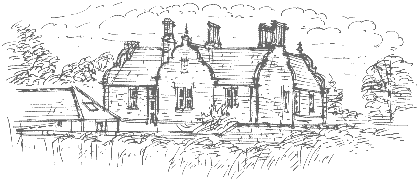 |
Hummingbird HawkmothMonday, 15th July 2002, West Yorkshire |
![]()
![]()
![]()
![]() Rocks |
History |
Workshop |
Links |
Home Page
Rocks |
History |
Workshop |
Links |
Home Page
![]()
 It's been two years since we saw a hummingbird hawkmoth. In June 2000 we had one feeding at the honeysuckle blossoms on our garden and, a few days later, another at the coast in Whitby.
It's been two years since we saw a hummingbird hawkmoth. In June 2000 we had one feeding at the honeysuckle blossoms on our garden and, a few days later, another at the coast in Whitby.This morning I get a report from Rockville, Maryland, of what sounds like a closely related American species;
The one that has been visiting our deck likes the purple petunias. It is the size of a cicada, with rapidly-beating wings which when still look like butterfly wings but smaller. It has two antennae, and an elephant like 'trunk' which unfurls as the insect approaches the flower and then reaches in to retrieve the nectar. It has a green or greenish brown torso and a maroon lobster-like tail. It does not appear to have a stinger and it seems unafraid of humans, at times buzzing quite nearby.
By coincidence I received this message in the afternoon from Sheffield.
on Friday afternoon (12th July) I spotted a Hummingbird Hawkmoth in my garden. It was there for several minutes moving between the perennial phlox and bedding plants. I was wondering what the furthest regarding northerly sighting of this incredible insect was?
 As far as I know they haven't got this far north yet, but I shall certainly
be keeping an eye out for them.
As far as I know they haven't got this far north yet, but I shall certainly
be keeping an eye out for them.
Rock House
 It's a warm day again and small tortoiseshell, gatekeeper, large skipper, small skipper, large white and meadow brown butterflies are active on Storrs Hill, where I make a sketch of Rock House for my book. It's built in what I'd call a gothic style with a touch of the Netherlands in the gable ends. I've yet to check out the details but the story we were always told is that it was built for one of two brothers who made a fortune selling uniforms to both sides in the Franco-Prussian war.
It's a warm day again and small tortoiseshell, gatekeeper, large skipper, small skipper, large white and meadow brown butterflies are active on Storrs Hill, where I make a sketch of Rock House for my book. It's built in what I'd call a gothic style with a touch of the Netherlands in the gable ends. I've yet to check out the details but the story we were always told is that it was built for one of two brothers who made a fortune selling uniforms to both sides in the Franco-Prussian war.The other brother's house stands less than a mile away to the west along the ridge overlooking the Calder valley. Park House ultimately became Ossett Grammar school, so I walked past one brother's house on the way to the other's every day on my way to school.
 When you consider that it's just the rear view that we can see from the hill you get an idea of how grand the design is and how profitable the textile industry must have been in the 1860s and 70s.
When you consider that it's just the rear view that we can see from the hill you get an idea of how grand the design is and how profitable the textile industry must have been in the 1860s and 70s.![]()
Richard Bell,
wildlife illustrator
E-mail; 'richard@willowisland.co.uk'
![]() Next page |
Previous page |
This day in 2000 |
This month |
Nature Diary |
Home Page
Next page |
Previous page |
This day in 2000 |
This month |
Nature Diary |
Home Page
![]()